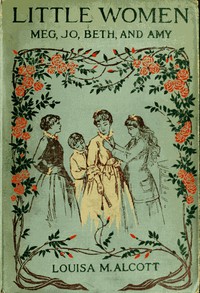Little Women remains Louisa May Alcott’s best-known work. Its charm and innocence continue to attract readers, despite the fact that the social and domestic reality portrayed is very different from contemporary domestic life. Jo March is regarded as one of the most complete, self-assured, and best-loved characters in children’s literature. If truth be told, many boys find that they can identify with her almost as easily as girls can. The author dared to give her characters faults such as selfishness, vanity, temper, and timidity qualities never seen before in such young characters.
A little bit of information about the author:
Louisa May Alcott Biography(1832–1888)
Louisa May Alcott was an American author who wrote under various pseudonyms and only started using her own name when she was ready to commit to writing. Her novel Little Women gave Alcott financial independence and a lifetime writing career. She died in 1888.
Early Life
Famed novelist Louisa May Alcott was born on November 29, 1832, in Germantown, Pennsylvania. Alcott was a best-selling novelist of the late 1800s, and many of her works, most notably Little Women, remain popular today.
Alcott was taught by her father, Amos Bronson Alcott, until 1848, and studied informally with family friends such as Henry David Thoreau, Ralph Waldo Emerson and Theodore Parker. Residing in Boston and Concord, Massachusetts, Alcott worked as a domestic servant and teacher, among other positions, to help support her family from 1850 to 1862. During the Civil War, she went to Washington, D.C. to work as a nurse.
Acclaimed Author: ‘Little Women’
Unknown to most people, Alcott had been publishing poems, short stories, thrillers and juvenile tales since 1851, under the pen name Flora Fairfield. In 1862, she also adopted the pen name A.M. Barnard, and some of her melodramas were produced on Boston stages. But it was her account of her Civil War experiences, Hospital Sketches (1863), that confirmed Alcott’s desire to be a serious writer. She began to publish stories under her real name in Atlantic Monthly and Lady’s Companion, and took a brief trip to Europe in 1865 before becoming editor of a girls’ magazine, Merry’s Museum.
The great success of Little Women gave Alcott financial independence and created a demand for more books. Over the final years of her life, she turned out a steady stream of novels and short stories, mostly for young people and drawn directly from her family life. Her other books include Little Men (1871), Eight Cousins (1875) and Jo’s Boys (1886). Alcott also tried her hand at adult novels, such as Work (1873) and A Modern Mephistopheles (1877), but these tales were not as popular as her other writings.
A Few Thought Provoking Questions:
- Do you think the traditional “little women” roles celebrated in Louisa May Alcott’s classic are outdated in today’s society? What ideals do you believe are timeless?
- Who is your favorite character in Little Women, and why? Which character do you most identify with, and why?
- When Jo takes Beth to the seashore for one last visit before the younger sister dies, Beth compares each of the four March sisters to birds—Jo is strong and untamed like a gull, Meg is a turtledove, which represents love, Amy is a beautiful and lively lark, while she herself is a peep, a bird that stays close to the shore. Do you think Beth’s comparisons were accurate? If you compared yourself to a bird, what species would you be?
- The complexities of sibling relationships—a jumble of childhood games, petty squabbles, family traditions, deep frustrations, and fierce loyalty—play out on every page of the novel. What moments best or most precisely illustrate the bonds between sisters?
- What scenes from Little Women linger in your mind long after you have closed the book?
Please share your thoughts, questions and reviews with us! We would love to hear from you.






